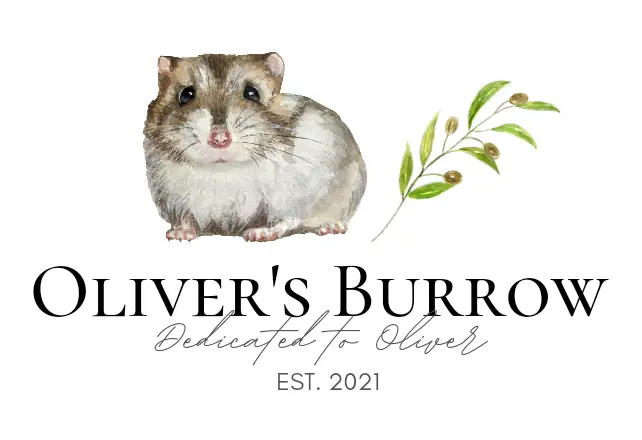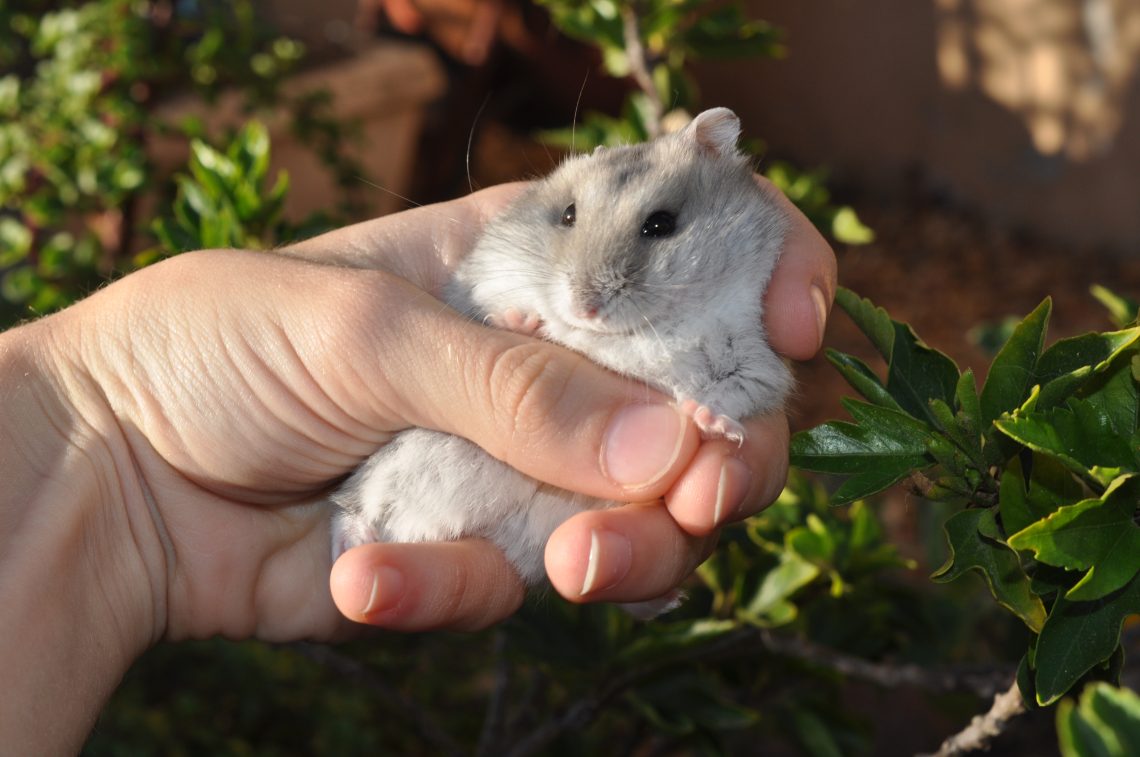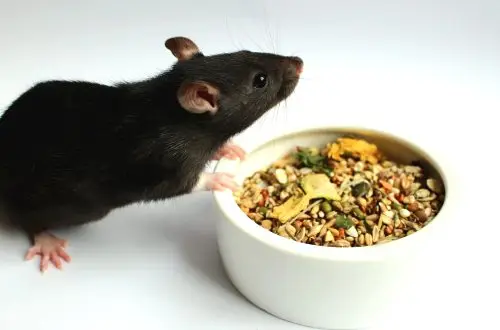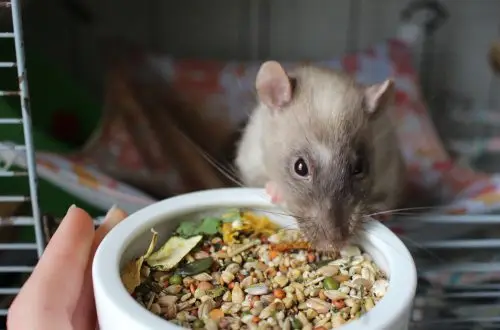🌿🐹
At Oliver’s Burrow, our goal has always been simple, to create small pet nutrition that’s realistic, evidence-based, and genuinely balanced for South African conditions.
Separate “Syrian” and “Dwarf” hamster mixes found locally may claim that each is uniquely suited to the species.
While that might sound like a more specialised approach, in practice, it’s not always the most nutritionally sound or practical, especially given the limited ingredient variety available locally; dividing hamster diets in this way often reduces nutritional quality instead of improving it.
We chose to develop one comprehensive, balanced mix for both Syrian and Dwarf hamsters, based on actual dietary science, ingredient availability, and the metabolic realities of these animals.
Understanding What Hamsters Really Eat:
In nature, both Syrian and Dwarf hamsters are opportunistic omnivorous granivores.
Their natural diet isn’t dominated by a single food group, it’s a complex mix of:
• Wild grasses and grains for slow-release carbohydrates and fiber.
• Small seeds for fats and energy (Largely derived from local grasses).
• Legumes and roots for protein and resistant starch.
• Leafy and fibrous plant material for digestion and mineral intake.
• Insects and small invertebrates for essential amino acids and animal-derived micronutrients.
The difference between Syrian and Dwarf hamsters is mostly about proportion, not content.
Dwarfs have a smaller body mass and a higher tendency toward insulin resistance and fat accumulation, which means they should consume less dietary fat and simple carbohydrates than Syrians. (A maximum of 7% Total fat in their diet.)
However, both species thrive on the same broad nutrient spectrum: balanced protein, moderate fat, high fiber, and a wide range of plant materials.
The Limitation of South African Ingredients:
South Africa’s industry doesn’t have the same access to European ingredients, such as varied suitable seeds, grass elements, or natural grains suited to the hamster’s ideal diet.
That means any “Syrian vs Dwarf” mix made locally is pulling from the same limited pool of ingredients, it doesn’t achieve true nutritional precision it simply reshuffles proportions creating dilution.
And when done poorly, it can even lead to imbalance, especially if “dwarf” mixes rely on adding more small, high-fat oil seeds instead of carefully moderating fat intake.
Why Two Mixes Aren’t Automatically Better:
In South Africa, the selection of hamster-suited raw ingredients is limited compared to Europe, leaving us without access to fine-tuned components.
Many “dwarf” mixes rely on increasing the proportion of small seeds (like sesame, linseed, sunflower/safflower and hemp) under the assumption that dwarfs “need more seeds.” (additionally there should be more consideration for the omega 3 ans 6 content within each seed type and ensure adequate ratios.)
While small seeds are a large part of their natural diet, the seeds available locally are very high in fat and low in structural fibre, which can make the mix too energy-dense for dwarf species that are prone to metabolic disorders.
Dwarf hamster’s primary seed intake stems from grass and shrub seeds and not oil seeds which is commonly used in mixes.
The goal shouldn’t be “more seeds”, it should be better balance across functional food groups.
Building Functional Diversity Instead of Ingredient Redundancy:
Our mix was designed around functional variety.
Each component is included for a specific nutritional purpose.
1. Grains and Cereals
Provide slow-release carbohydrates, texture for dental wear, and valuable soluble fibre for digestion.
2. Legumes
Contribute protein, lysine, and resistant starches, improving gut health and prolonging satiety.
3. Seeds
Used in moderation to supply essential fatty acids without overwhelming the mix with lipids.
This prevents excessive energy density while maintaining coat and skin health.
4. Protein Sources
Introduce biologically complete animal protein with balanced amino acids, reflecting the omnivorous habits of wild hamsters.
5. Vegetables and Botanicals
Add fibre, natural sugars, and plant phytonutrients.
Herbs and flowers promote natural foraging behaviour and trace micronutrient diversity.
6. Fibre and Enrichment
Ensures proper gut motility and natural chewing activity, critical for tooth and digestive health.
Our resulting composition sits squarely within the optimal range for both Syrian and Dwarf hamsters.
It supports energy, coat, and muscle health for Syrians, while remaining low-fat and fibre-rich enough for dwarfs’ metabolic sensitivity.
We utilise Carbohydrate and Glycaemic control within all our mixes:
No inclusions of processed and refined wheat or other similar products, which would only offer quick-release carbohydrates that do not belong in a “diabetes-sensitive” species’ main diet.
The goal is controlled, slow energy release.
The refining process strips away the most nutritious parts of the grain, including fiber, vitamins, and minerals. Examples of refined and processed grains: White rice,
Pasta, CousCous.
Why This Approach Is More Appropriate:
Rather than designing two limited mixes from the same ingredients, Oliver’s Burrow focused on building one nutritionally sound foundation that aligns with natural feeding behaviour.
Compared to other seed-heavy dwarf formulations, our mix:
Emphasises grain-to-seed balance, mimicking the wild diet’s carbohydrate-to-fat ratio.
Maintains moderate lipid levels, preventing obesity and blood-sugar spikes in dwarfs.
Uses cross-category variety; cereals, legumes, seeds, insects, herbs and botanicals, instead of repeating multiple oilseeds with near-identical nutrient profiles.
Ensures fibre density high enough for dental wear and gut function.
This functional diversity makes the diet suitable for both species without compromise.
The same bag can be portion-adjusted for either hamster type, lighter feeding for dwarfs, slightly more generous servings for Syrians; without the need for two distinct recipes that differ only superficially.
Transparency and Realism:
Our formulation avoids what’s known as nutrient redundancy, the inclusion of several similar ingredients that provide nearly identical nutrition because that creates the illusion of variety while actually narrowing nutrient range.
For example, our mix uses smaller measured amounts across diverse categories.
This creates a broader micronutrient spread, supports multiple digestive functions, and mirrors the variety hamsters would encounter in natural foraging environments.
All ingredients are listed clearly and in logical order of inclusion.
We use controlled amounts across categories to build balance.
We also recognise that no commercial mix, ours included, can replicate the entire complexity of a wild hamster’s diet.
That’s why we focus on nutritional integrity within realistic limits, ensuring the formula reflects biology, not marketing trends.
In Summary:
Separating hamster mixes by species isn’t inherently wrong, but doing so effectively requires access to a far broader range of ingredients than what’s available in South Africa.
Without that range, splitting the formula doesn’t improve it; it simply divides the same limited nutrition across two bags.
At Oliver’s Burrow we’ve created one balanced, moderate-fat, high-fibre mix that aligns with the natural feeding ecology of both Syrian and dwarf hamsters.
Our single, balanced formulation means:
• Every bag delivers the same consistency and nutritional integrity.
• Owners don’t have to worry about choosing “the wrong one.”
• Hamsters receive a well-rounded, carefully designed diet that supports both Syrian and Dwarf needs through moderation and balance.




